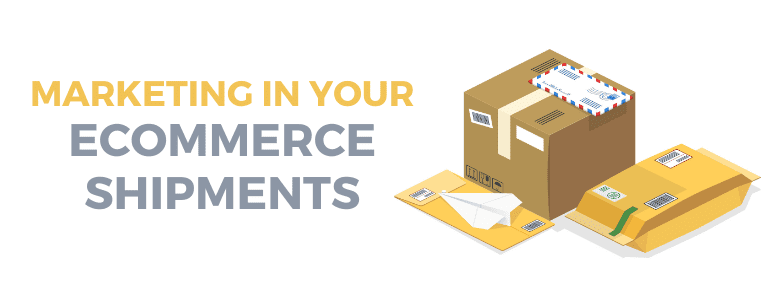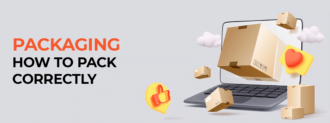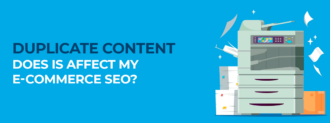Table of contents
Marketing the shipments of your online store’s orders
Last week we talked about how to pack your shipments to ensure their correct transport, as well as their perfect delivery condition. Ttoday we want to dig deeper into the subject and delve into the subject of shipments, so this article will talk about how to do marketing in you ecommerce’s shipments.
We repeat what we said in the previous post: Shipping is the (only) direct contact between the customer and us. It’s the “physical” aspect of it all and where, finally, the customer feels that the business transaction is over. Many merchants may think that their responsibility ends when they hand over the package to the courier, but the customer doesn’t understand it that way, perceiving the whole service, the online shop and the logistics as a “whole”.
And if there is a “whole”, we have to be present in all its parts. That’s why we also have to introduce a little bit of marketing in the shipping process. How can we do it? Here are some ideas of what we can include in the shipments.
Discount coupons
A good way to get customers to become regulars is to introduce discount coupons in your shipments, for example. With this incentive the customer will be satisfied by getting a discount and the company will get in return a customer who will buy again on the online platform of the brand.

Free merchandise inside the shipment
This technique is great for keeping customers happy. If a customer who has bought two T-shirts finds three in the package, even if the third one is for advertisement, they’ll be surprised and grateful. An unexpected gift will create a special bond between the brand and the customer, who will remain loyal.
Surprise details
Another way of marketing eCommerce shipments is to include a chocolate bar, candy or even a gift card in the box. The customer will be rewarded for buying online and the brand thus performs a good customer loyalty strategy. (You’ll be surprised how effective this is).

Cross selling: collaborate with other companies or online stores
Sending coupons, offers and gifts in shipments can also be a good opportunity to collaborate with other eCommerce or companies. An online store could promote itself in the shipments of brands linked to its target, even introducing product catalogs that complement each other.
Capturing customer feedback
Including product information in the package is very important, as is getting customer feedback. It’s a good marketing strategy to include in the shipment a card with questions or a questionnaire about the product, simple and with very useful information. When making this type of request it’s important not to reward the customer for doing so, as many users would see it as a way of “buying” positive reviews and comments.

Store product catalog
Adding a catalog or brand brochure in the package helps customers see more of an online store’s products and become familiar with all of its items.
A handwritten note
It may seem simple, but in a digitized world of massive sales like the one we live in, someone taking the trouble to write a handwritten note, personalized and expressing gratitude for having bought in their store, can make a big difference in dealing with a customer. Something as simple as that.

More marketing in your ecommerce shipments – The Packaging
In the previous part of this article we focused on things you could include in your package when shipping. Let’s say that we focused our attention on the “add-ons” of the product, since in this other blog post we made an effort to make a complete guide to instruct you on everything related to how to ship the products. That is, how to properly pack and prepare shipments so that they arrive correctly to their recipient. Therefore, in this post we wanted to go more into the marketing side, and give you tactics and strategies to improve your shipments through sales and loyalty techniques. Because we believe that a good marketing in your ecommerce shipments is the best strategy to avoid returns and make your customers remember you and buy again.
It seemed that everything was said, but no, there’s is more to be added. And since we see the ecommerce marketing is barely talked about, (in general), we’re going to extend a little more on how to further improve our shipments. You may think that all this is superfluous, something that is not necessary, that is basically adding costs to the already tight prices when competing on the Internet.
But stop and think about how Amazon invests huge amounts of money in developing new packaging formats. The benefits this provides must be very large, more than we could imagine or they wouldn’t do it, don’t you think?. To give you an idea, years ago, Dotcom Distribution, – one of the largest logistics companies in the world, – did a study on the packaging of ecommerce products, and this is what came out of it:
- 52% of customers repeat purchases with the same company if they feel the packaging is of ‘premium’ quality.
- 40% of customers say they would upload a photo of the product when they open it if they perceive the packaging to be spectacular.
- 88% say they would mention the brand on social networks if the packaging of their order was personalized.
You can see it’s no joke.
If in the first part of this post we had focused on what to add to the box for marketing (bonuses, discounts, gifts, handwritten notes…), now we’re going to focus on what goes on the outside: the packaging itself.
THE PACKAGING
Well, to begin with, let’s clarify what packaging means in the whole sense of the word. Well, as wikipedia says, the packaging is defined as “Packaging is the science, art and technology of enclosing or protecting products for distribution, storage, sale, and use. Packaging also refers to the process of designing, evaluating, and producing packages”. That is, in the particular case of online stores, it would be the box, the paper, the bag, or whatever container we use to store the products that our customers order through our online store, and send them to be protected.
In this and other posts we have talked about boxes: the materials they’re best made of, the padding you should put inside to protect the goods, even how to wrap them correctly to ensure their contents. However, we have not determined a good packaging design for our shipments.

Regardless of the packaging of the products we sell, it’s highly recommended to have our own packaging, which reflects both our brand identity and the values we want to convey. One of the main reasons is the brand value that gives us a unique design, with our logo, which denotes a professional company and also gives us the opportunity to communicate in all available formats.
How to make the packaging for your online store?
Design and colours
First of all, you must be clear that you are tied, to a certain extent, to the type of design you already have in your online store. It wouldn’t make much sense that, if the whole website is, for example, green, you make red boxes to send your products. It would not relate one thing to the other, no matter how big or how many times you include the logo. What you have to do is to take the main elements of your web design (colors and shapes, mainly) and translate them to a physical format, trying to think in the same way you did when you designed (or chose a design) for your online store. The idea is that everything “breathes” the same essence.

Communication
Remember that the packaging, apart from being beautiful, has to fulfil a communicational function. The first thing to consider is that you must avoid being too baroque or putting too much non-relevant information on it. You have to get to your customer, so it would be best to use informal (if you brand and sector allows it) and imperative sentences so the consumers feel your brand close to them. Remember this is the first physical element that they will receive from you.
Packaging, in general, is very dehumanized, and here we’re talking about sending a standard cardboard box, enclosed with packing tape and little else. Since it’s practically the only physical interaction between us and the customer, the packaging itself is the one that should address the consumer face to face. In this way, trust and closeness to the consumer is achieved.
Information
The advertising issue shouldn’t go to our heads too much, because we can’t forget that this is a shipment, so there’s a series of information placed in specific places that must be met, so that the sent package is properly identifiable for any transport operator who works with it.
The main thing is the label with the name and address of the recipient. So remember to leave a convenient space for that on the upper side of the box (it must be very visible, one of the protagonists of the piece). In order to certify that the shipment will reach the recipient, the data must be correct, including at least: Recipient’s Name, Street Name, Flat or House Number, Postal Code and Town Name.
%22%20transform%3D%22translate(1.2%201.2)%20scale(2.39063)%22%20fill-opacity%3D%22.5%22%3E%3Cellipse%20fill%3D%22%23989898%22%20rx%3D%221%22%20ry%3D%221%22%20transform%3D%22matrix(62.62049%20-37.0882%2031.80383%2053.69824%20133%20166.4)%22%2F%3E%3Cellipse%20fill%3D%22%23fff%22%20rx%3D%221%22%20ry%3D%221%22%20transform%3D%22matrix(7.91794%20254.87704%20-26.19224%20.81368%20234.8%2092)%22%2F%3E%3Cellipse%20fill%3D%22%23fff%22%20cx%3D%2215%22%20cy%3D%22112%22%20rx%3D%2219%22%20ry%3D%22255%22%2F%3E%3Cpath%20fill%3D%22%23fff%22%20d%3D%22M5.6-34.8L260-17l-3.6%2051.8L2%2017z%22%2F%3E%3C%2Fg%3E%3C%2Fsvg%3E)
In addition, the sender (you) must also be identified, in case there are any returns. You need to think that the top side of the box is the “Home” of your packaging, as it is the first thing that everyone looks at. So it’s imperative that the logo is also there (even if it is also included elsewhere).
One thing that is very prominent and that Amazon does very well is the customization of the labeling. By this we don’t just mean labels that carry the name of the person who ordered the product; there’s also a reference to the reason for the shipment.
You can ask the customer if there’s a special reason why they’re buying the product and customize the label and packaging according to their preference. This is great for gifts, where in addition to the classic personalized message card, we can personalize the message on the box, as well as the box itself (there are online shops that offer different types of packaging depending on whether it’s for a birthday, Christmas, corporate gift…).
The added value
If we want to get creative and seek to stand out, we can also invest a little more and try to step away from the standard packaging, looking for a note of differentiation in ours. A dosage system, a useful closing system, a design that is out of the norm… The best thing is to search and create an added value that can be the key to the purchase, as very often the packaging sells more than the product itself.
The dual use
A key to your packaging can be to play with the dual use that could be given to it. Just like ColaCao when they used metal boxes for the product, which people then used to store cookies or other stuff and so, keeping then at home. In case you don’t have the same possibilities, you can also play with your packaging in the same terms. A box that becomes a single-use rubbish bin, an ecological bag that serves as a compost for the vegetable garden, a little house for a pet… creativity in this sense is your only limit.

Integrate technologies
One way to give dynamism and transcendence to a physical format is to use elements that integrate it with digital functions. The most classic example is the QR code, which with a smartphone scan, allows the customer to access online content. Although it’s also true that, as many possibilities this offers, the vast majority of users ignore these codes. But still, we can use them if they give the customer some benefit. If we tell them that they’ll have a discount on their next purchase or that they can enter some kind of sweepstakes, there are more chances that they’ll use them. And, honestly, it won’t cost you anything to integrate them into the design.

Other parts
Although it’s the fundamental piece, the packgaging is not only the external box. Everything that goes inside and that is not the product or promotional material, is also packaging. We already mentioned earlier in the post how to pack correctly, we even listed the different options for each element. However, it’s worth remembering it and, above all, keep in mind that they must also be aligned with the rest of the design.
The paper
Although it isn’t necessary for all products, it never hurts to add some wrapping paper, even if it’s in the form of a sheet, to separate the products from the opening of the box itself. Not only to protect the products, but also for the much more premium look it gives when the package is opened. Even if you use the cheapest material for packaging, make sure it is not wrinkled or badly folded.

The filler
It’s more than obvious that the boxes won’t be the exact size of the objects and you’ll need to add padding. We’ve already covered this topic, and I just want to remind you that you should do it according to the product you’re sending and the design you have already made. For example, if you’re a very eco business, whose design and everything is very marked by that style, don’t make the mistake of using forespan (super pollutant) as filler… Instead, try to use materials according to your brand message.

The tape or tape
Try to avoid transparent and, even worse, brown packing tape, which is the most unsightly thing in the world. Try to look for colours that match your design and branding. You can even complete the design of the box with the tape itself (imagine that your colors are red, black and white. You can use white and red for the box and complete the design with a black ribbon).

As you can see, the packaging of your products can play a key role in your sales strategy. Shipping marketing is much more than just packaging your orders correctly. It consists on selling and communicating a whole shopping experience that is completed precisely at that moment when the customers receive and open their order.
We don’t consider ourselves repetitive if we reiterate that the package is the only physical interaction we have with the customer, and that, moreover, we don’t star in it, but the courier. So the communication part of the whole process falls almost exclusively on the package itself (the courier won’t do any advertising or commercial work for us). Therefore, it’s a key piece that we need to take care of.
Don’t worry, this doesn’t end here, we’ll continue to complete this post and add more on this topic in future editions.
Do you want any help? Remember that we have a creative team that can help you prepare the necessary packaging for your store. Do you want to share your experience with packaging and shipping marketing? Don’t hesitate, use the comments to do so and let’s have a debate on the topic.
Cheers and good ecommerce!
Related Posts





















Deja un comentario